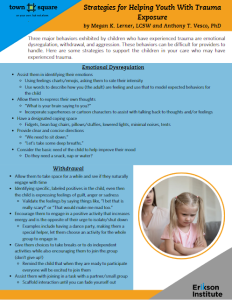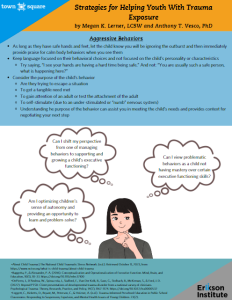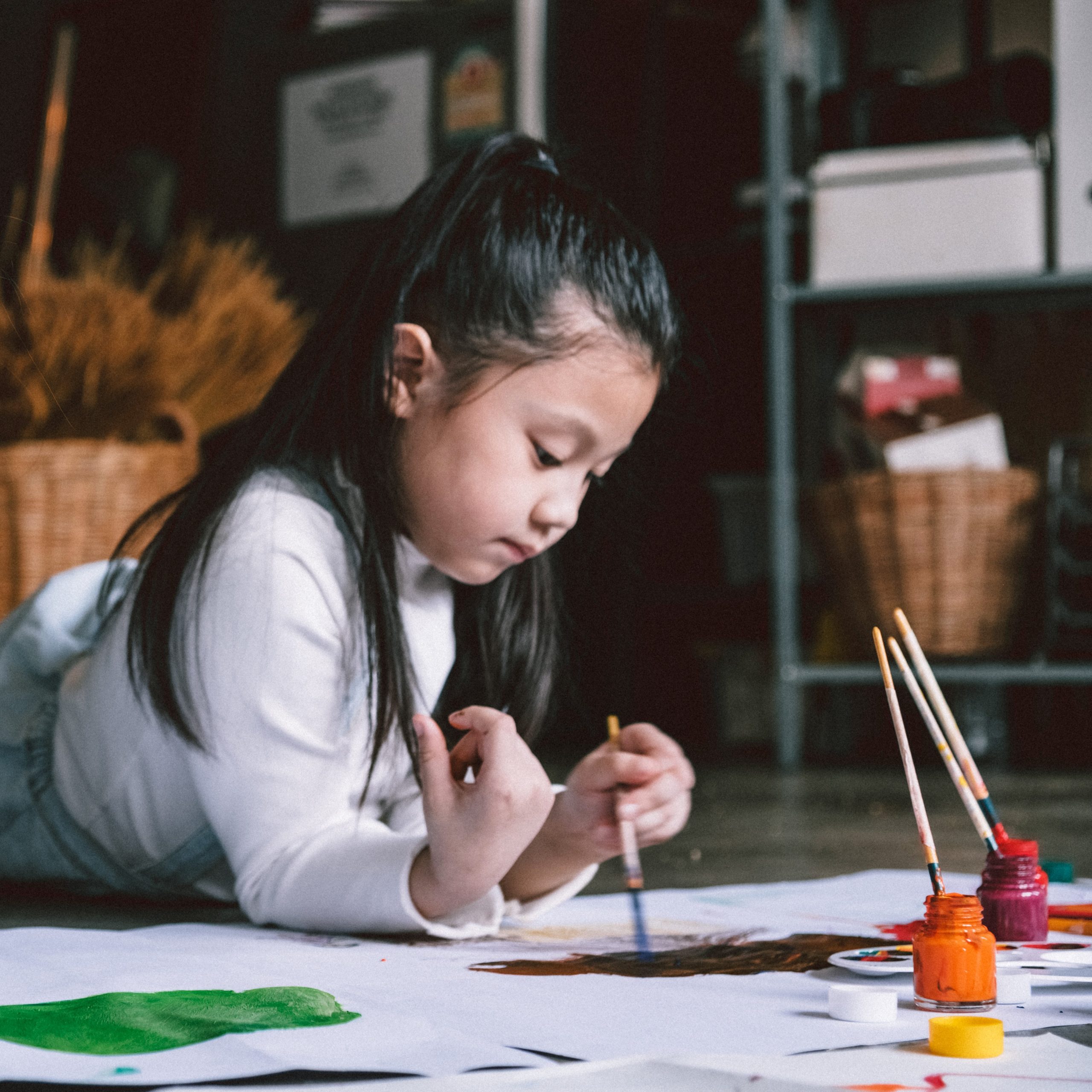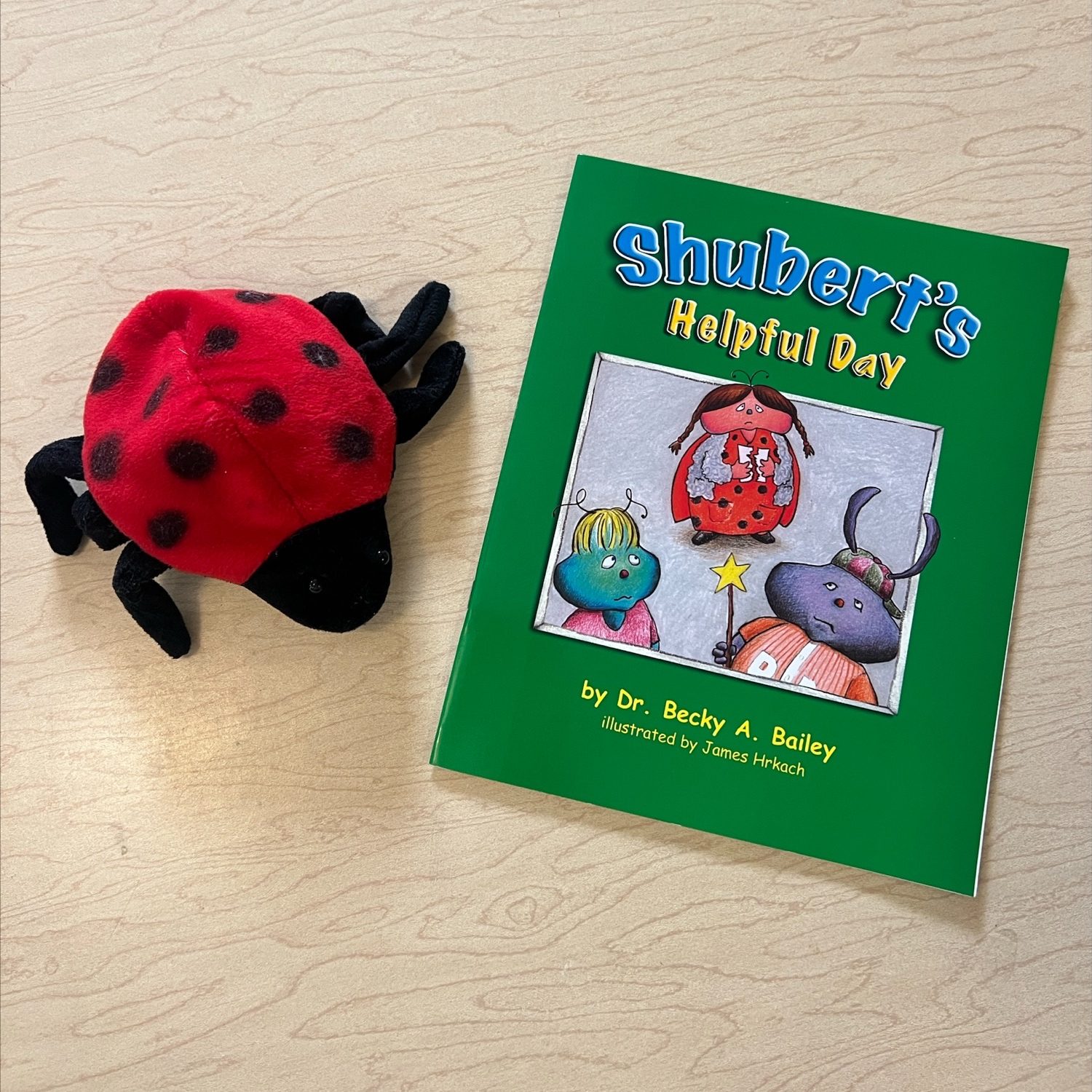This printable/downloadable resource will help providers understand difficult behaviors that may be a result of trauma, and support children in developing skills to overcome their difficulties.
TS Strategies for Helping Youth With Trauma Exposure
Accessible version below:
Strategies for Helping Youth with Trauma Exposure
Strategies Emotional Dysregulation
Assist them in identifying their emotions
Using feelings charts/emojis, asking them to rate their intensity
Use words to describe how you (the adult) are feeling and use that to model expected behaviors for the child
Allow them to express their own thoughts
“What is your brain saying to you?”
Incorporate superheroes or cartoon characters to assist with talking back to thoughts and/or feelings
Have a designated coping space
Fidgets, bean bag chairs, pillows/stuffies, lowered lights, minimal noises, tents
Provide clear and concise directions
“We need to sit down.”
“Let’s take some deep breaths.”
Consider the basic need of the child to help improve their mood
Do they need a snack, nap or water
Strategies for Withdrawal
Allow them to take space for a while and see if they naturally engage with time
Identifying specific, labeled positives in the child, even then the child is expressing feelings of guilt, anger or sadness
Validate the feelings by saying things like, “I bet that is really scary!” or “That would make me mad too.”
Encourage them to engage in a positive activity that increases energy and is the opposite of their urge to isolate/shut down
Examples include having a dance party, making them a special helper, let them choose an activity for the whole group to engage in
Give them choices to take breaks or to do independent activities while also encouraging them to join the group (don’t give up!)
Remind the child that when they are ready to participate everyone will be excited to join them
Assist them with joining in a task with a partner/small group
Scaffold interaction until you can fade yourself out
Strategies for Aggressive Behaviors
As long as they have safe hands and feet, let the child know you will be ignoring the outburst and then immediately provide praise for calm body behaviors when you see them
Keep language focused on their behavioral choices and not focused on the child’s personality or characteristics
Try saying, “I see your hands are having a hard time being safe.” And not: “You are usually such a safe person, what is happening here?”
Consider the purpose of the child’s behavior
Are they trying to escape a situation
To get a tangible need met
To gain attention of an adult or test the attachment of the adult
To self-stimulate (due to an under-stimulated or “numb” nervous system)
Understanding the purpose of the behavior can assist you in meeting the child’s needs and provides context for negotiating your next step
Ask Yourself These Questions Before You Intervene
Can I shift my perspective from one of managing behaviors to supporting and growing a child’s executive functioning?
Can I view problematic behaviors as a child not having mastery over certain executive functioning skills?
Am I optimizing children’s sense of autonomy and providing an opportunity to learn and problem-solve?
by Megan K Lerner, LCSW and Anthony Vesco, PhD





